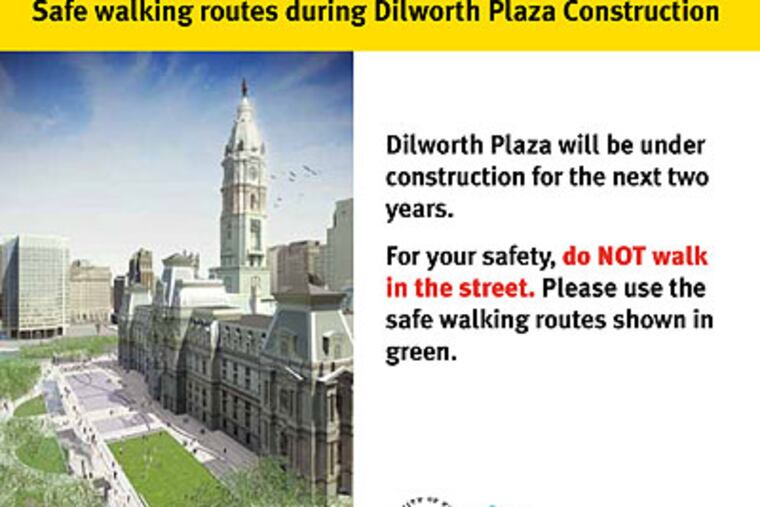Inquirer Editorial: Protect pedestrians during Center City revival
When the long-awaited makeover of Dilworth Plaza is completed two years from now, the plaza will be a great place to stroll. Until then, though, the project could be a major pain for Center City office workers, residents, and visitors accustomed to navigating the area on foot.

When the long-awaited makeover of Dilworth Plaza is completed two years from now, the plaza will be a great place to stroll. Until then, though, the project could be a major pain for Center City office workers, residents, and visitors accustomed to navigating the area on foot.
With fencing that went up all around the plaza immediately after police rousted the Occupy Philadelphia encampment last week, pedestrians' normal routes for getting around the west side of City Hall changed overnight - and not for the better.
Like so many downtown construction projects, the plaza work now blocks long stretches of pavement. But rather than safely taking the long way around, by crossing to an open sidewalk, many pedestrians have been walking dangerously inside the traffic lanes around the plaza.
It's a situation that quickly got the attention of City Councilman James Kenney, who has campaigned to keep sidewalks open at construction sites.
"Someone," Kenney warned, "is going to get hurt."
Just as quickly, Mayor Nutter and the Center City District officials overseeing the project have launched a multipronged effort to discourage pedestrians from risky behavior, such as walking among the vehicles veering around City Hall.
On Thursday, Nutter urged the public to steer clear of the blocked area, stick to the sidewalks, and stay out of the street. To guide people around the work, the city will put up signs, post police officers on busy corners, and widely distribute information cards with a map showing preferred pedestrian routes through the construction zone.
So, basically, the plan centers on getting the public's cooperation on obeying "don't walk" signs. Good luck with that, right?
But there doesn't really seem to be a good alternative. While other construction sites needlessly block sidewalks, the curb-to-curb excavation planned for Dilworth Plaza appears to leave little choice but to keep pedestrians at a good, safe distance.
That means police on foot patrol, as well as the CCD's uniformed guides, will have to play a major role in directing pedestrians around the construction safely.
For anyone on foot who frequents the City Hall area, the Dilworth project at least offers the unanticipated prospect of better fitness - that is, if they make the effort to walk a few extra steps to reach their destination in safety.